Spark of A Nail (Work in Progress)

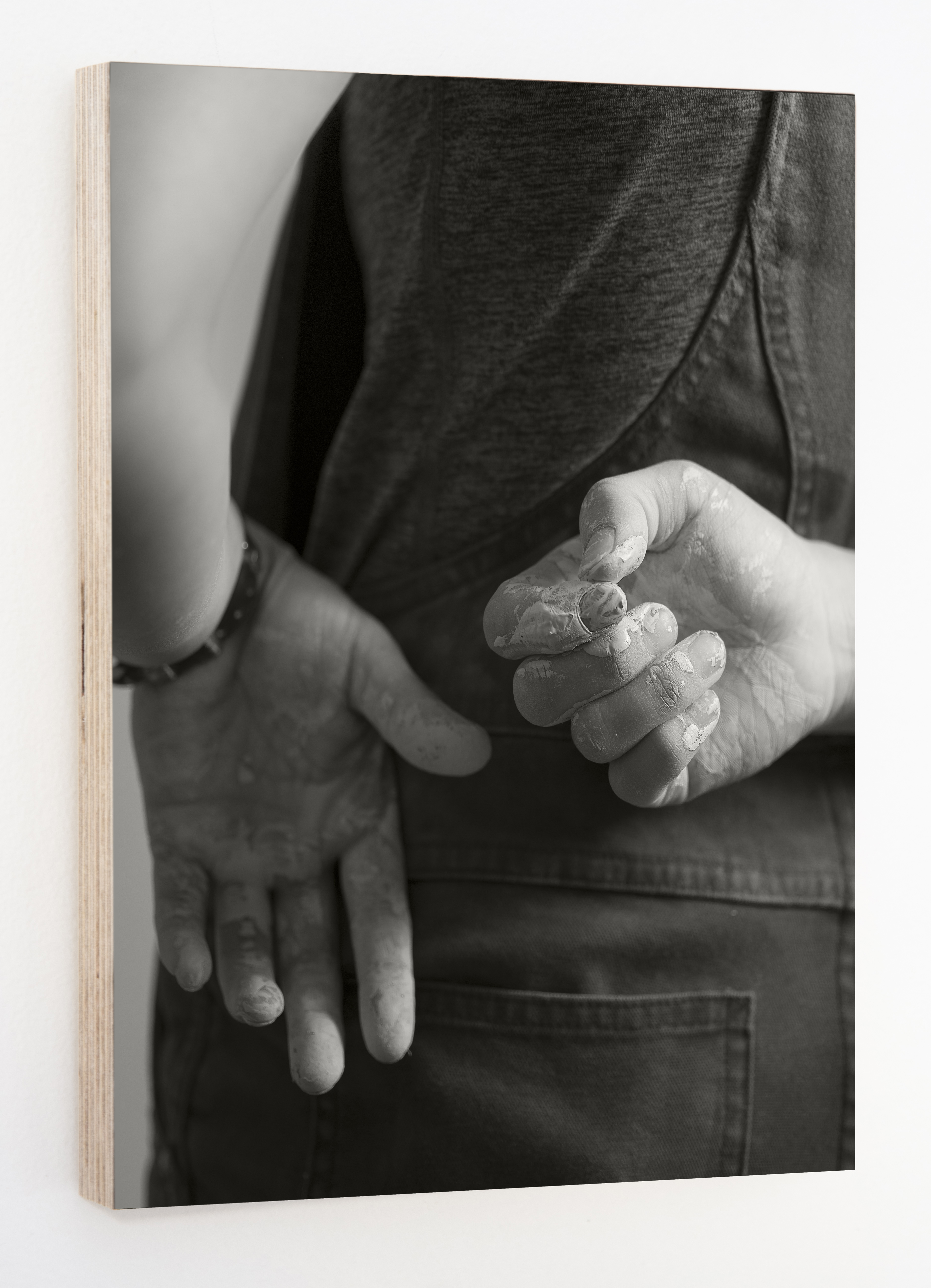



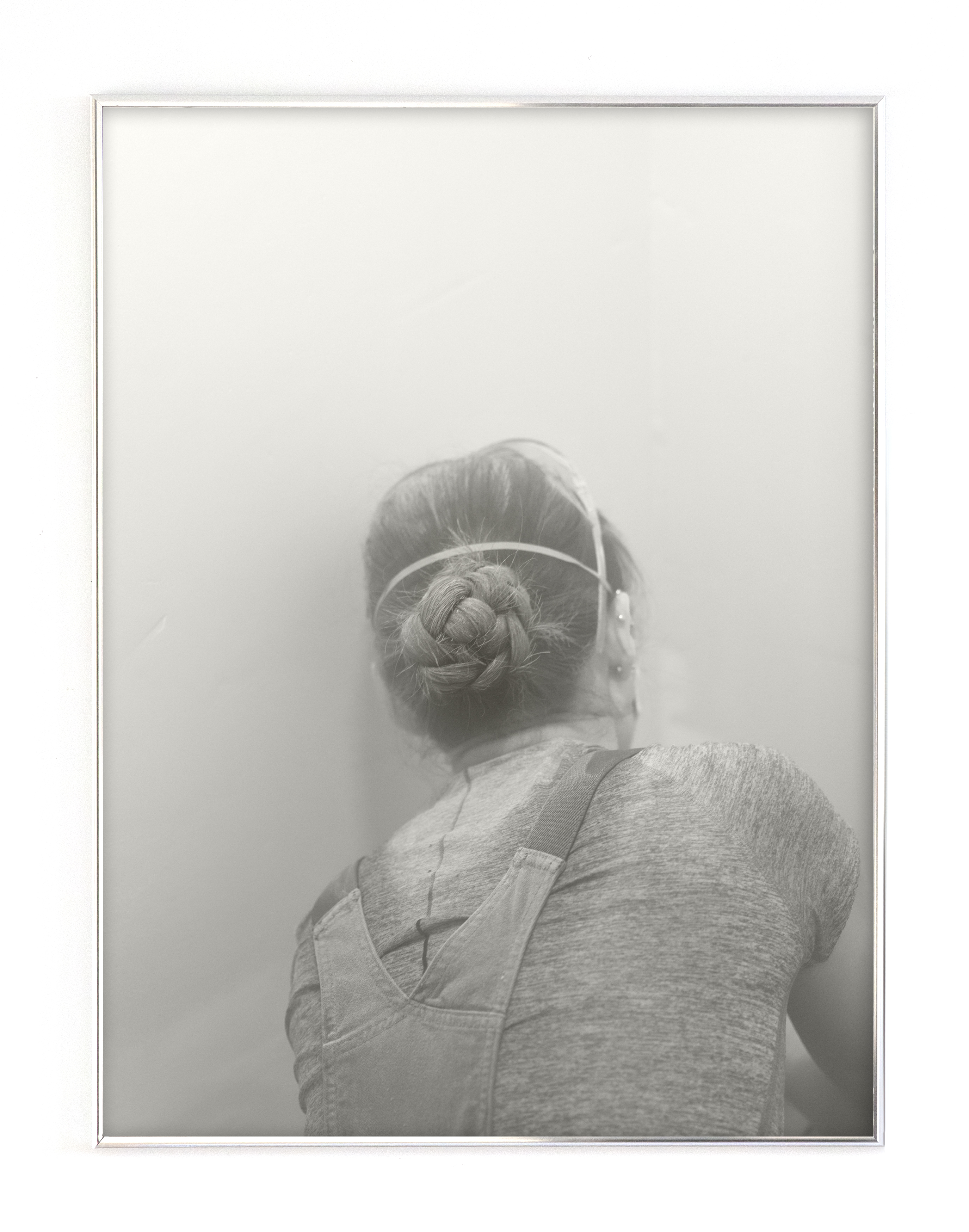






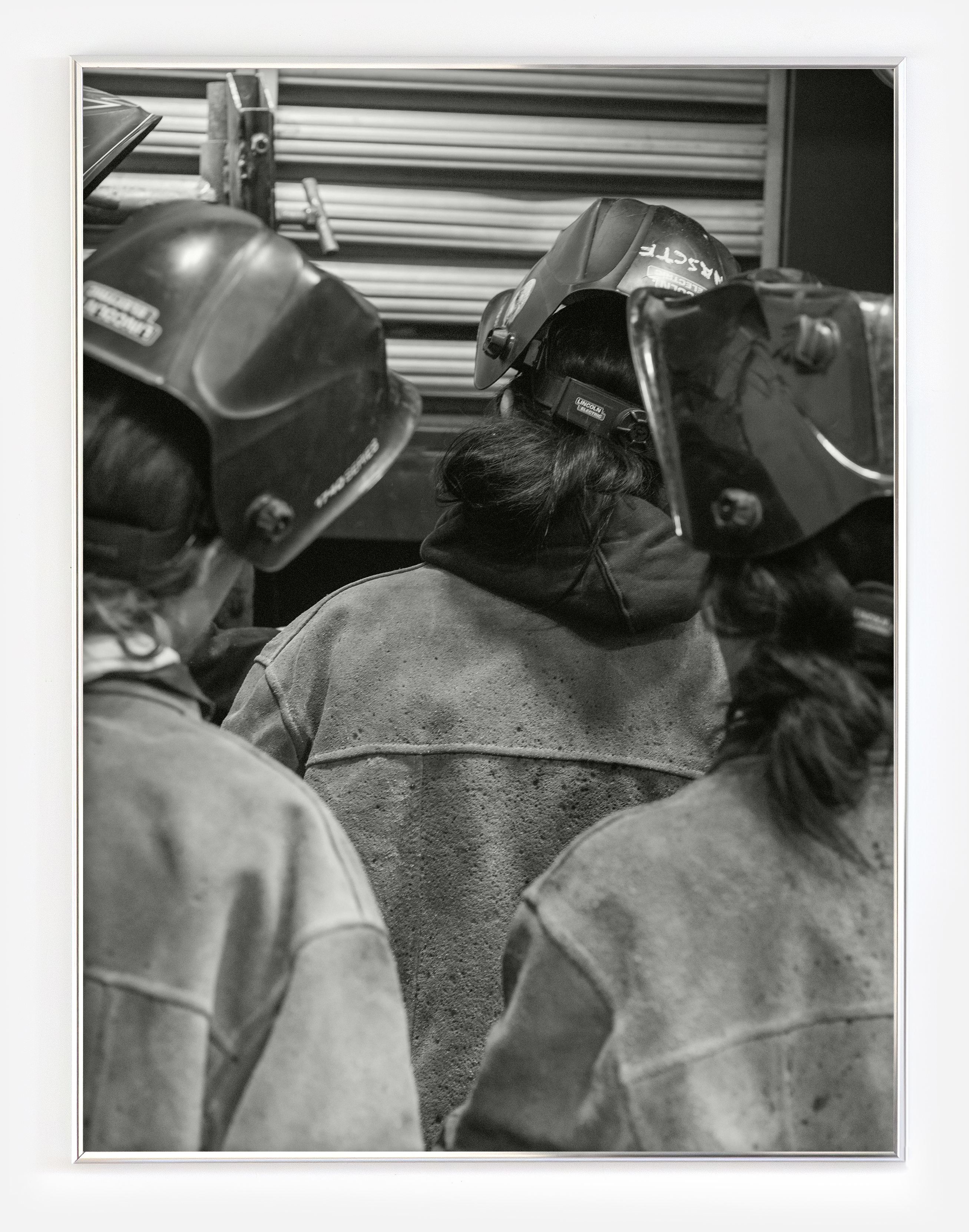
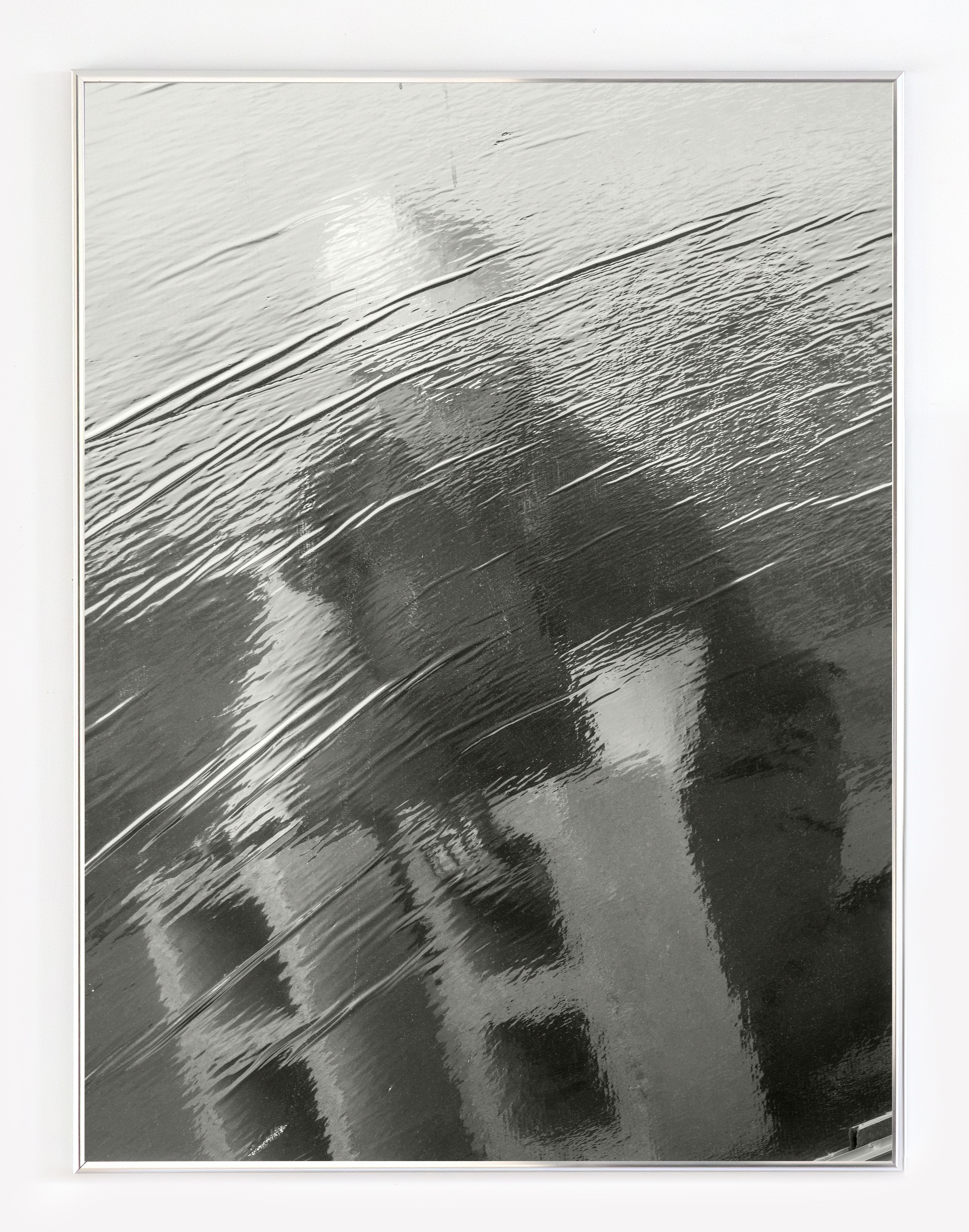


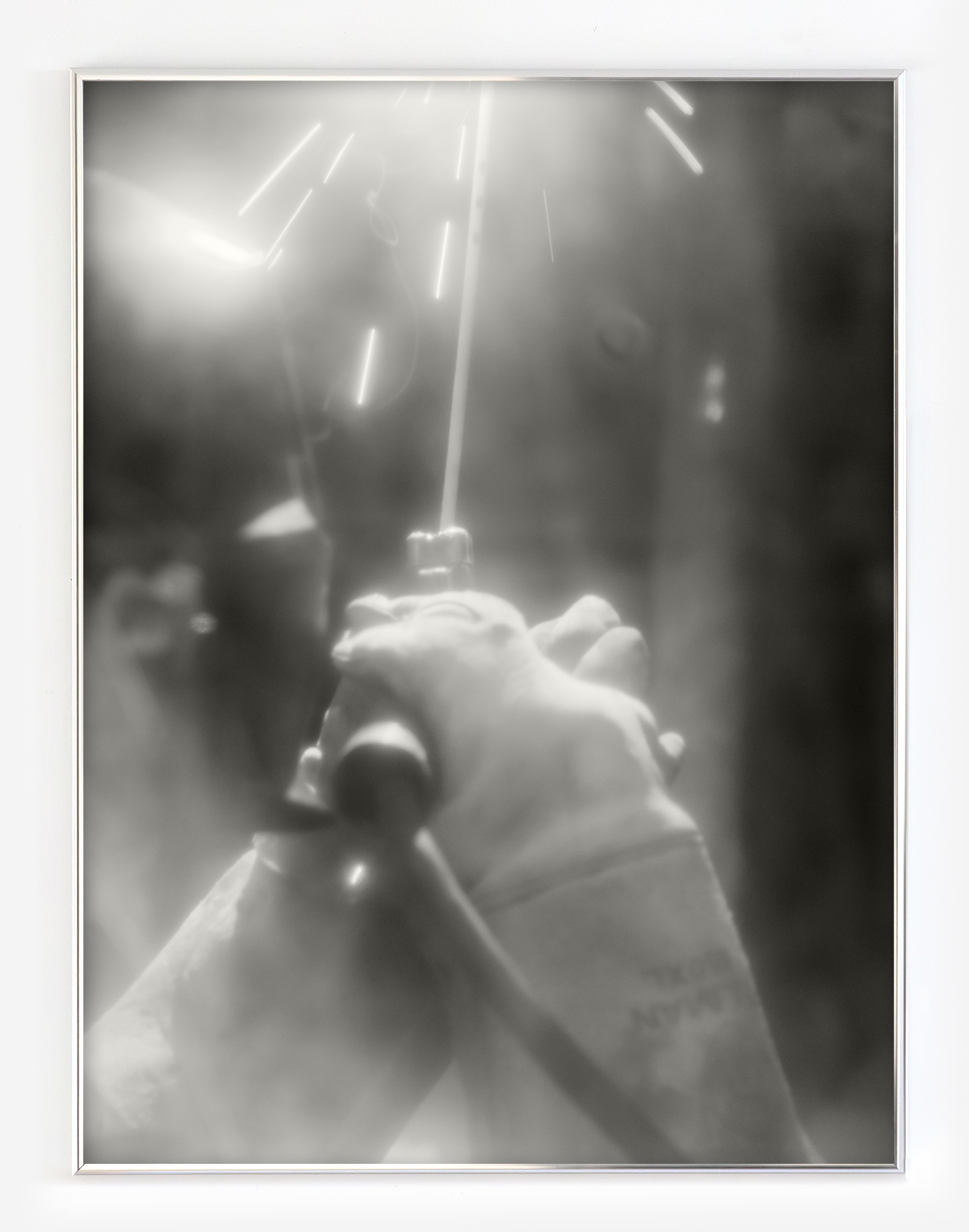
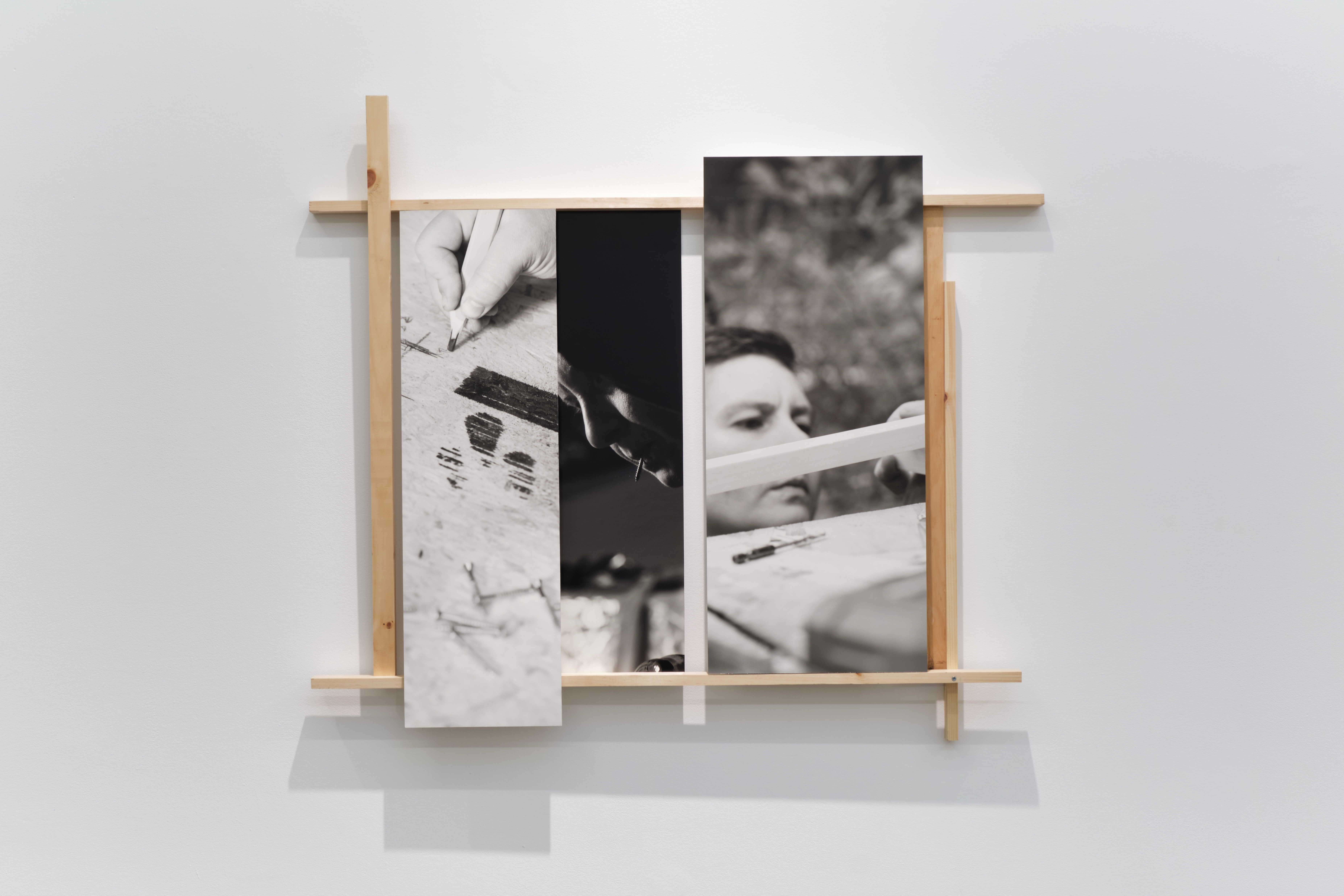
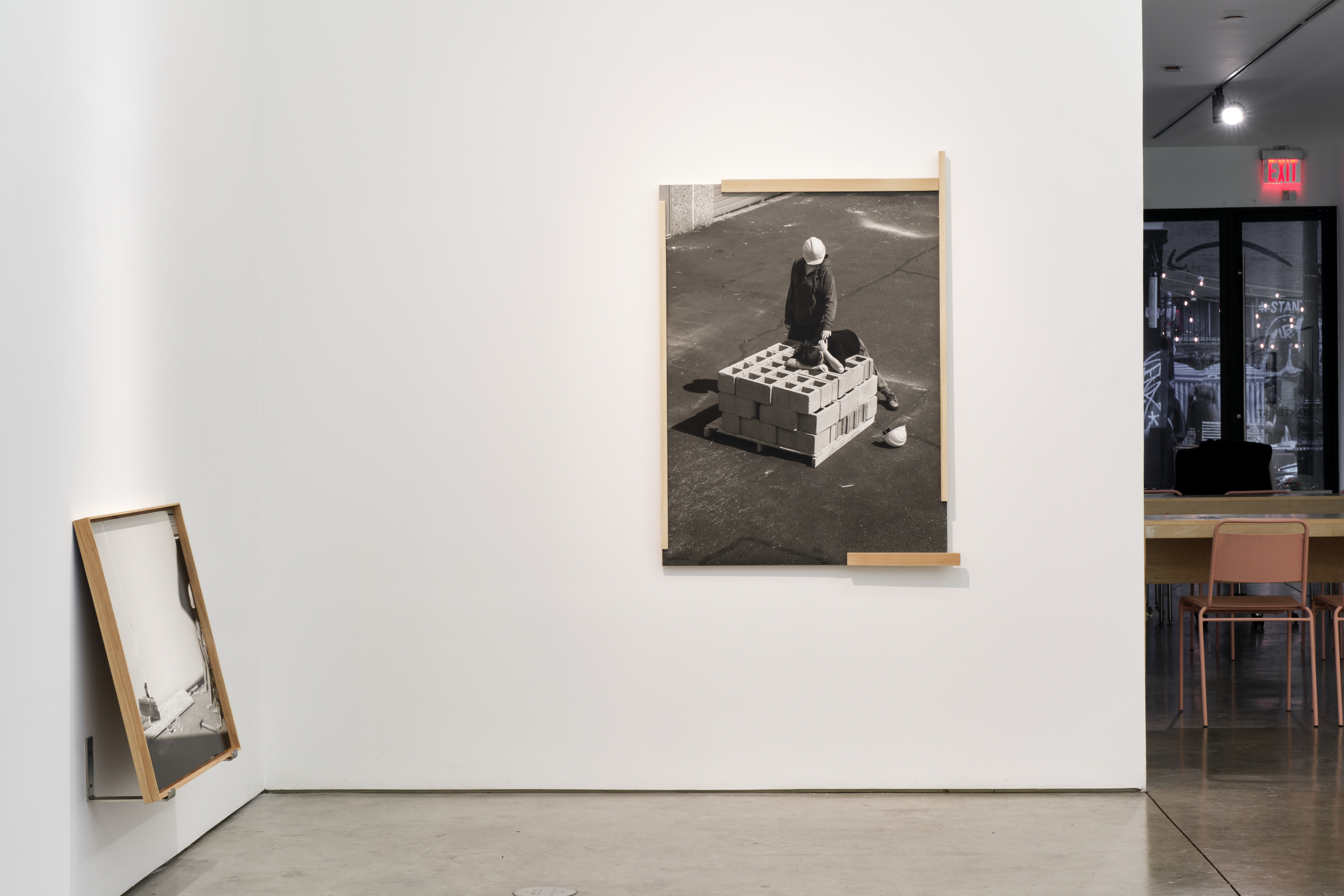

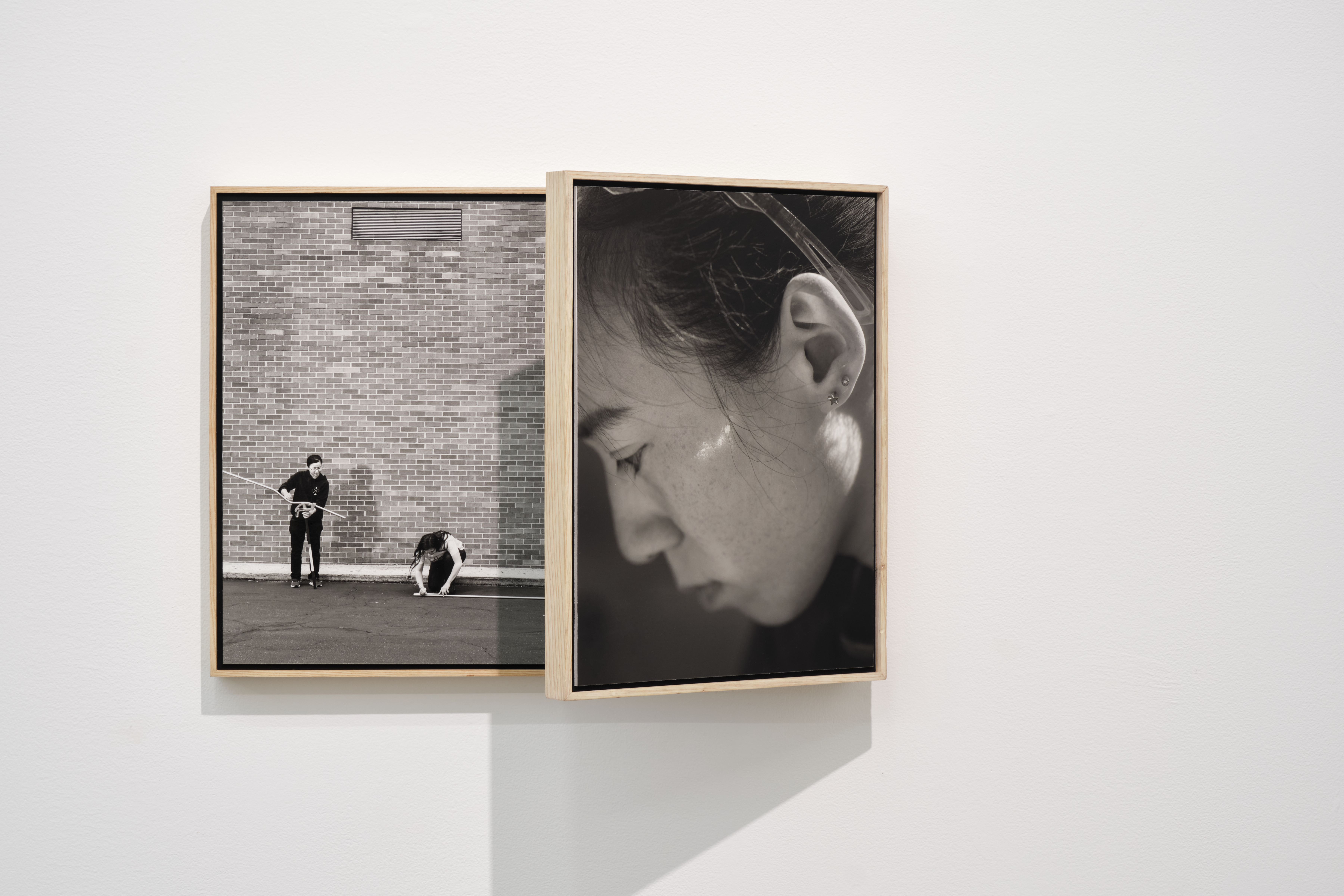

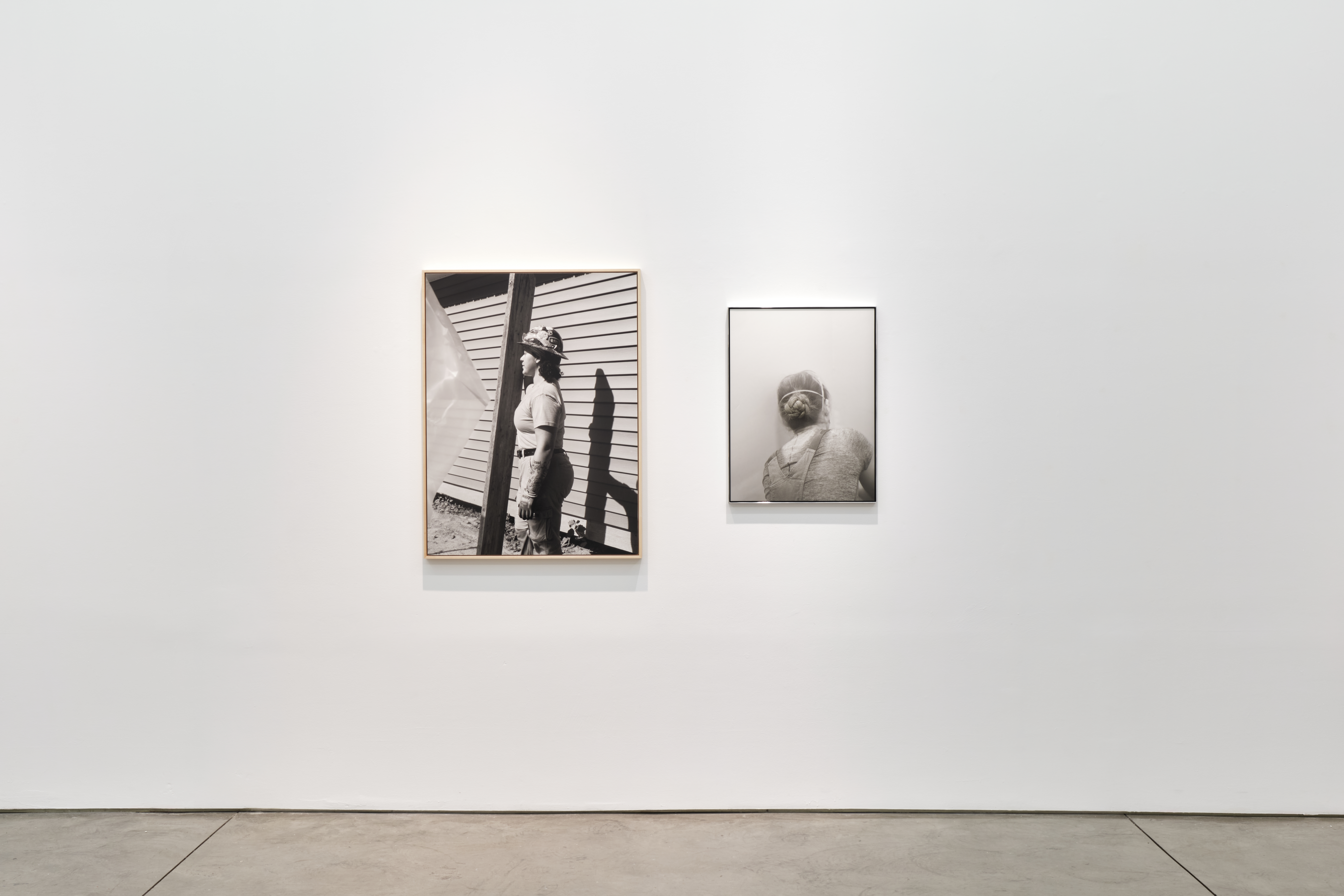
With a Finger She Guided My Eye Along the Rift in the Rock, 2019–20
This series unfolds in a quarry where two characters, a photographer and a quarrywoman, perform their respective jobs. The work grew out of my relationship with a woman named Stacy–the only female employee in a New England quarry's two-hundred-year history.
When I first met Stacy she was behind a desk in the quarry’s office. She’d sustained and recovered from an injury, but was still phone-bound because, she’d been told, she was “good at communication.” Stacy described the work she used to do, splitting granite with a hammer, moving a two ton rock with a thin metal rod. I’d never seen a quarrywoman rendered in a photograph. As our mutual curiosity about one another developed, so did a shared need to make the unseen seen.
As she was phone-bound, we needed to create a fictional world–but one in which her character was truly performing the work of a quarrywoman because, as Stacy explained, if “the guys” didn’t see her cutting stone, it was as if her ability to do so wasn’t real. She grudgingly understood her legitimacy in the quarry to depend on the veracity of an image.
Working with a medium and in an environment with tangled histories, I invert expectations about Stacy’s labor and photography. The anonymity emphasizes the characters’ physicality and the hand tools they use which allow them to shape forces larger than themselves. Various forms of image-making allow aesthetic differences to disrupt any perceived neutrality. An image generated by AI software, points to how pernicious biases persist in algorithmic form, and subverts photographic conventions that the b&w images establish. These gestures underscore the constructed nature of pictures, the expectations they engender, and the impossibility of acquiring a complete story. I don’t know the narrative Stacy would give shape to. This series is my portrait of how a relationship was forged–through pressure in a granite quarry, emerging out of a deep desire to see and be seen.





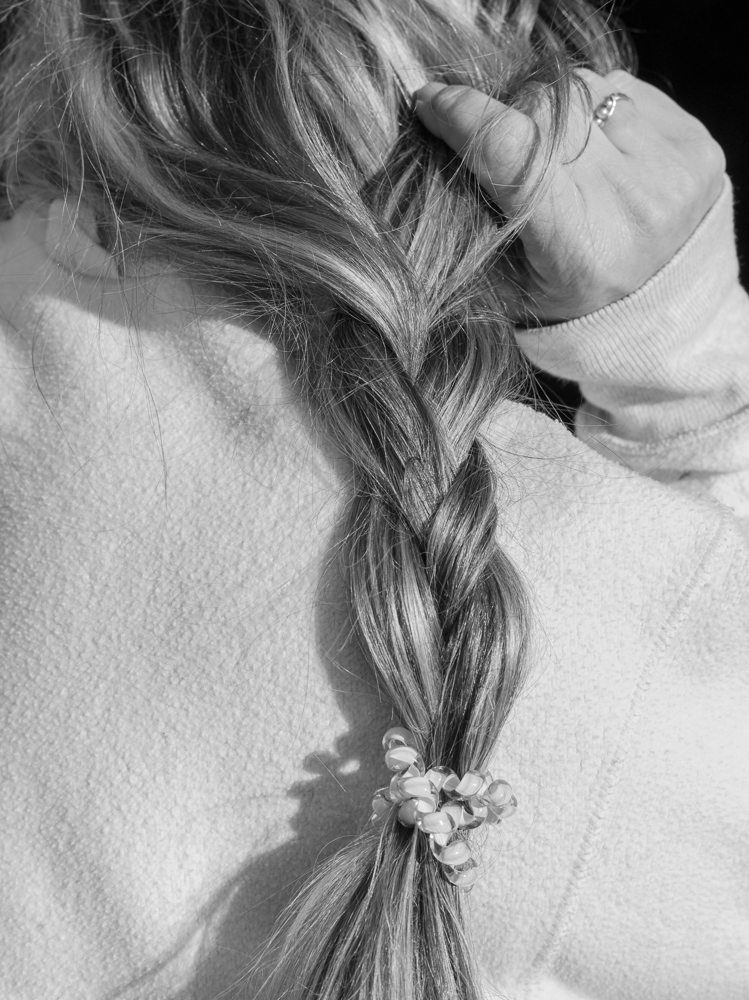





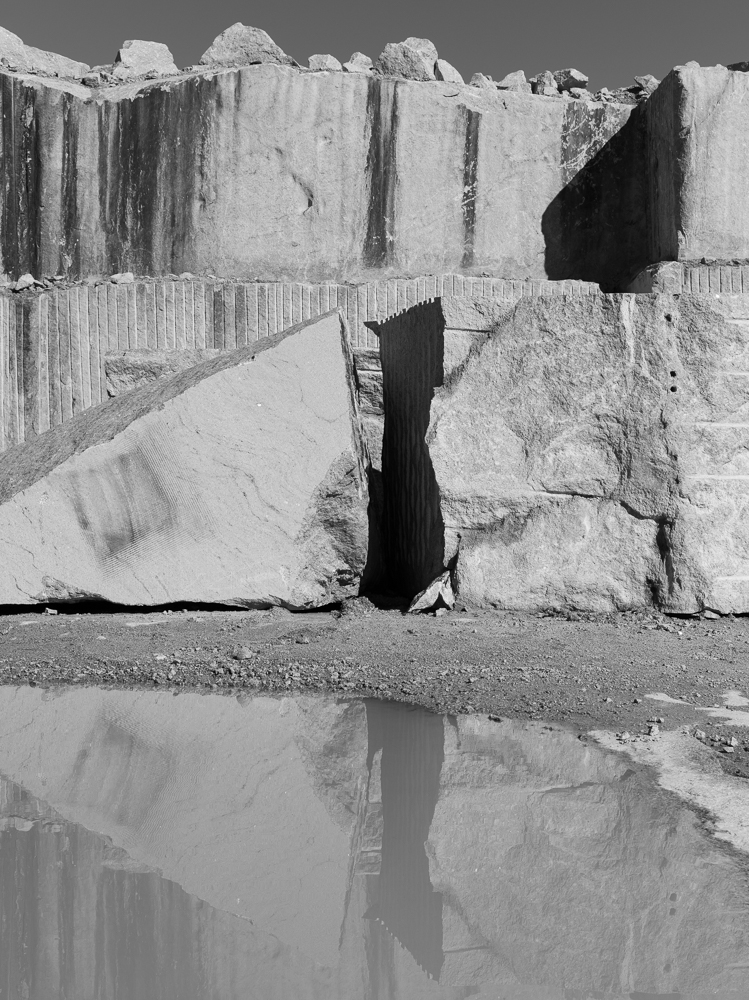







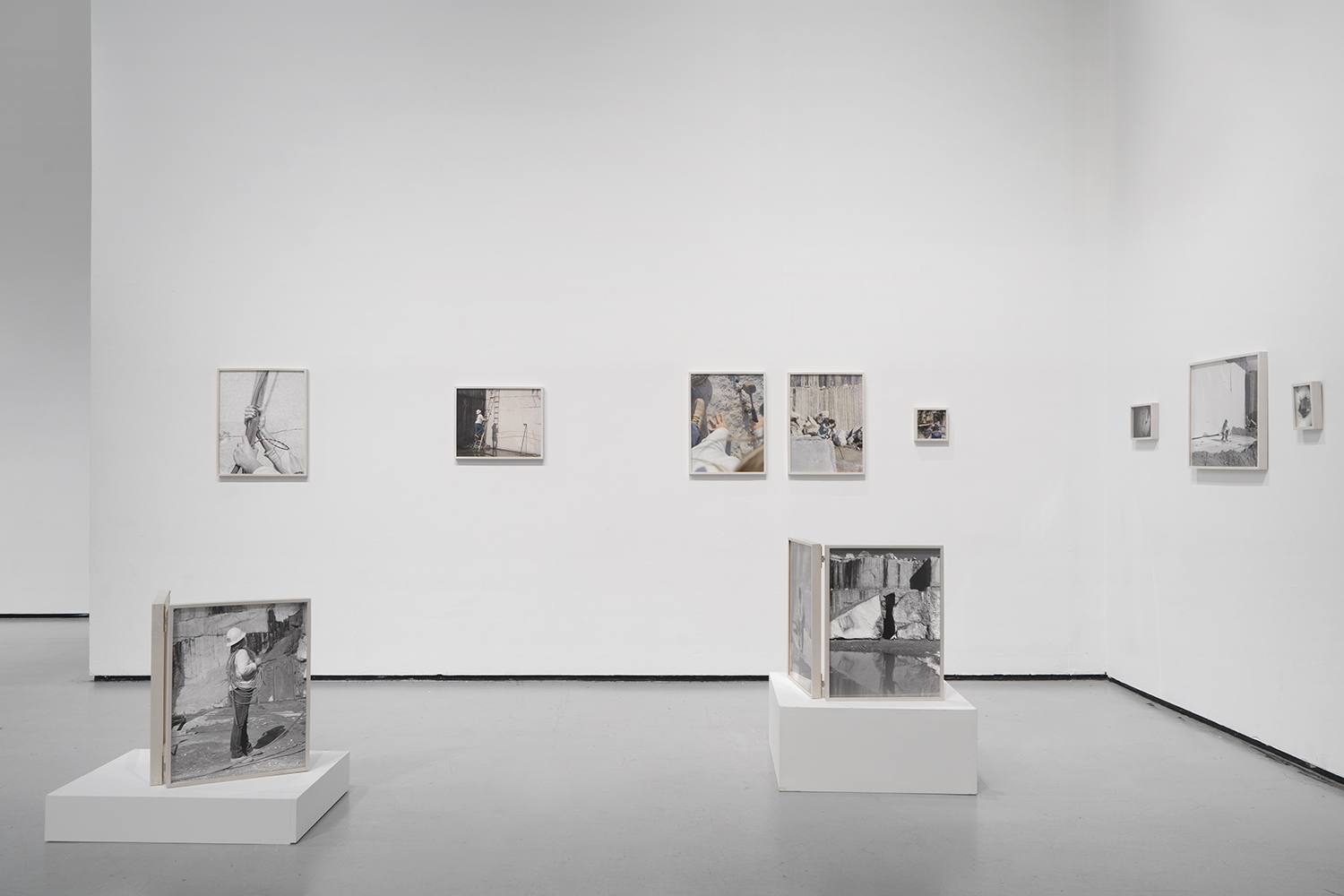
Sand Dunes, 2019
Sand Dunes is a seven-minute video piece, that weaves together moving and still images of the Colorado sand dunes, archival imagery with audio consisting of the hum of the sand dunes and the narration of several unseen characters. The script is based loosely on interviews, a fictionalized female representation of Alfred Wegner (the scientist who first proposed tectonic plate theory), and a personal conversation with a woman that started out about a rosebush and evolved into one about trauma and photography. The film considers photography's role in storytelling, and how intimate exchanges reveal broader social issues.
Springtime in Bad Gastein, 2017–18
In 1946, at the end of WWII, my grandfather’s life intersected with the lives of 1,250 Jewish refugees in Bad Gastein, an Austrian town hugged by mountains and filled with empty hotels. My grandfather, a Jewish captain in the U.S. army on occupation duty, was suddenly responsible for caring for this group of individuals who came from across Europe, spoke multiple languages, and shared the basic need for a home. His job was organizing refuge in Bad Gastein’s empty hotels. The injustice of having a home to return to when others did not was not lost on my grandfather. Which is, perhaps, why once he was home he wove a tale around this formative experience. He recounted it with such regularity that this Austrian town became mythological and a part of my family’s marrow.
Wanting to get inside this myth, I dug out the photograph of Bad Gastein’s waterfall that I’d acquired from my grandfather while he was living. This image of the waterfall, a central motif in my grandfather’s story, was the portal through which I entered this body of photographic work.
I dissolved the fixed narrative I’d known since childhood through searches in archives and sensitive conversations with family members. Once in Austria, the edges of the story expanded as I burrowed deeper into the town. I snuck into the hotels where the refugees lived, found individuals my grandfather met as children, and dug up earth to find remnants of the building where he stayed. In Austria and back in the studio I visually folded the historical and mythological into the present and used collage to mirror how memories and narratives accrue and morph.
In an effort to try to understand my grandfather’s experience and my own present day circumstances this series revisits this story anew in a moment when there are more people displaced due to conflict and climate change than in any other time in world history, and when a tide of far-right nationalism is on the rise again.
![]()
![]()
![]()
![]()
![]()
![]()
![]()
![]()
![]()
![]()
![]()
![]()
![]()
![]()
![]()
![]()
![]()
![]()
![]()
![]()
![]()
![]()
![]()
![]()
![]()
![]()
In 1946, at the end of WWII, my grandfather’s life intersected with the lives of 1,250 Jewish refugees in Bad Gastein, an Austrian town hugged by mountains and filled with empty hotels. My grandfather, a Jewish captain in the U.S. army on occupation duty, was suddenly responsible for caring for this group of individuals who came from across Europe, spoke multiple languages, and shared the basic need for a home. His job was organizing refuge in Bad Gastein’s empty hotels. The injustice of having a home to return to when others did not was not lost on my grandfather. Which is, perhaps, why once he was home he wove a tale around this formative experience. He recounted it with such regularity that this Austrian town became mythological and a part of my family’s marrow.
Wanting to get inside this myth, I dug out the photograph of Bad Gastein’s waterfall that I’d acquired from my grandfather while he was living. This image of the waterfall, a central motif in my grandfather’s story, was the portal through which I entered this body of photographic work.
I dissolved the fixed narrative I’d known since childhood through searches in archives and sensitive conversations with family members. Once in Austria, the edges of the story expanded as I burrowed deeper into the town. I snuck into the hotels where the refugees lived, found individuals my grandfather met as children, and dug up earth to find remnants of the building where he stayed. In Austria and back in the studio I visually folded the historical and mythological into the present and used collage to mirror how memories and narratives accrue and morph.
In an effort to try to understand my grandfather’s experience and my own present day circumstances this series revisits this story anew in a moment when there are more people displaced due to conflict and climate change than in any other time in world history, and when a tide of far-right nationalism is on the rise again.

























